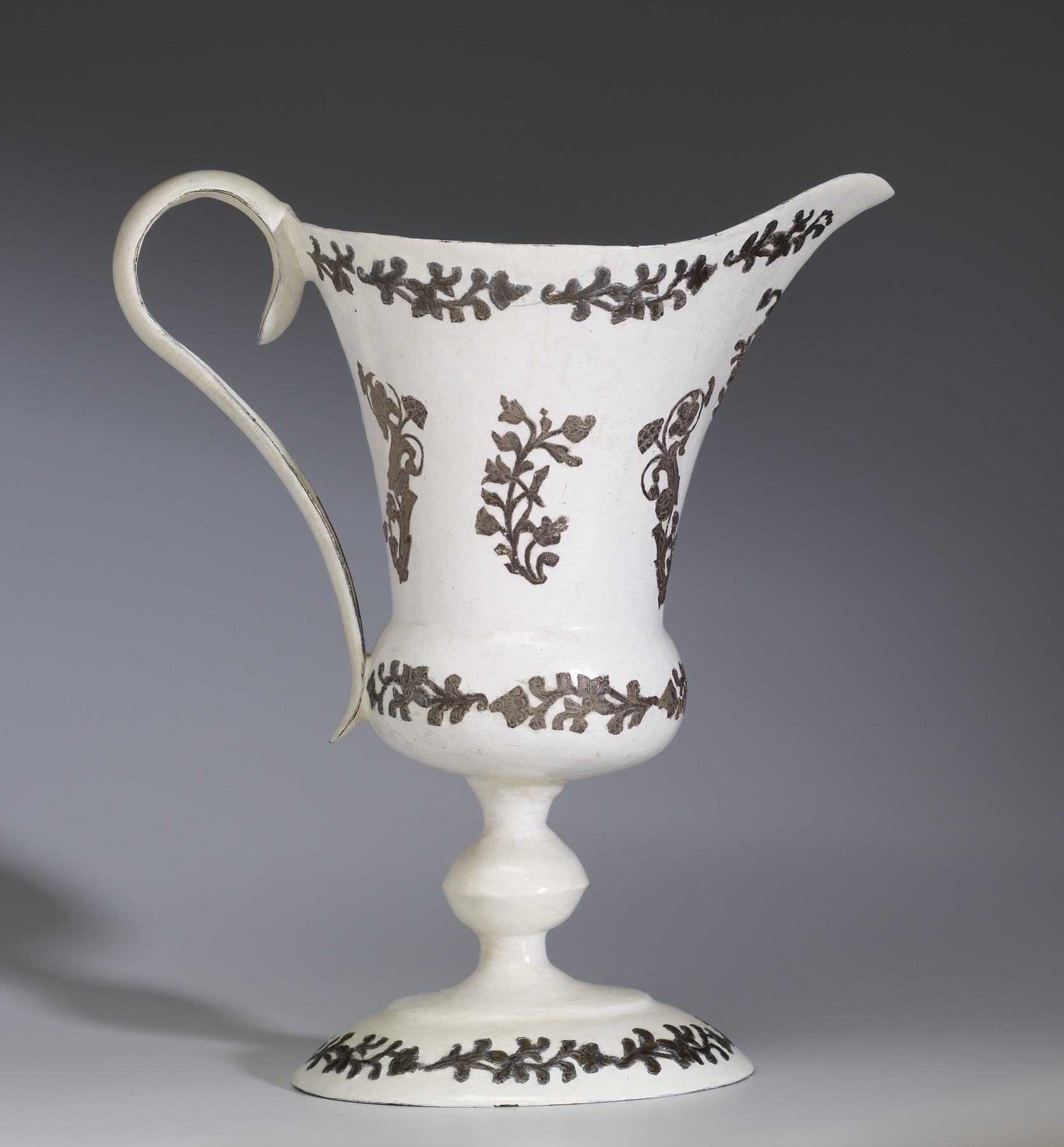Ewer
(18th and 19th Centuries )
Sometimes known as Elizabethan enamels (Ekizavetinskaia emal'), these white or blue enamels with stamped silver appliqués were produced at the town in northern Russia, then known as Ustiug, during the reign of Elizabeth I (1741-1762). Those vessels with white grounds may have served as economical substitutes for porcelain wares. In this instance, the ewer is encircled by three bands of stamped silver foliage and blossoms. Around the middle of the vessel there is a vertical row of sprigs and vines.
Provenance
Provenance (from the French provenir, 'to come from/forth') is the chronology of the ownership, custody, or location of a historical object. Learn more about provenance at the Walters.
Jean M. Riddell, Washington, D.C.; by bequest to Walters Art Museum, 2010.
Geographies
Russia, Velikiy Ustyug (Place of Origin)
Measurements
H: 8 7/8 x W: 7 9/16 x D: 4 7/16 in. (22.6 x 19.2 x 11.3 cm)
Credit Line
Bequest of Mrs. Jean M. Riddell, 2010
Location in Museum
Not on view
Accession Number
In libraries, galleries, museums, and archives, an accession number is a unique identifier assigned to each object in the collection.
In libraries, galleries, museums, and archives, an accession number is a unique identifier assigned to each object in the collection.
44.721


